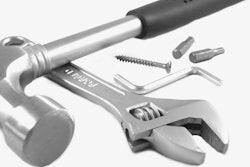
Grades are a method of rating performance — most commonly used in our schools, colleges and universities. As university professors, we both find them helpful in ranking the accomplishments of our students. In this month’s column, we propose a report card for your grain and feed business. We suggest a number of areas where as a manager, you can grade your business and we also discuss why these areas are important to your business. We also provide some resources to help you improve your grades. Because successfully managing your business requires many different skills and expertise in numerous areas, we highlight our first group of proficiencies in this column and will follow up next issue to complete our report card.
The grade card
Please utilize the grade card provided in Figure 1 to grade your business in the areas listed. Once you have rated yourself on the measures provided, rank the areas according to their importance to you as a manager. Following this, identify areas that need improvement (your call — but we would say if you have a “C” or below in an area, and the area is ranked as “Important,” to “Highly Important,” this would qualify for attention). Now, read through the following sections for the insight, ideas, tools and resources to help raise your grade point average.
Management
Starting with this area might be a bit dangerous for us as authors — we are talking about your self-evaluation of the job you do as a manager. However, we hope that you know your weak points and evaluate yourself honestly!
As educators, we challenge our students to strive to be lifelong learners and we feel that this applies to feed and grain managers too. Items 1 and 2 focus on how well informed you are as a manager. We know that in today’s world of information overload, it is difficult to keep up however, you can selectively pick key sources that you know provide reliable and timely information. Setting aside some time to read this and other publications and your trade association monthly newsletter, will help to keep you abreast of current trends and issues.
Another method of keeping current involves reading books. New ideas on management, leadership and motivation can get the creative “juices” flowing and pay off with new approaches to day-to-day management challenges. You may ask, “How do I find these books?” One way is to set aside an hour, twice a week to visit your local library to read books on these subjects. If that’s not an option, Amazon.com and other online booksellers have made the practice of book buying extremely easy. All you have to do is point and click and the books of your choice are purchased and sent directly to your home or office. Keyword searches and other online tools make the process particularly helpful, and for many books Amazon.com lets you read through a book’s excerpts to see if the book meets your needs.
Another technique you might consider is listening to books on CD or on an IPOD while traveling. Drive or travel time can be a great occasion to “read” a book and audio books address the argument that you don’t have time to read.
A further means to achieve items 1 through 3 under the “Management” category is to attend seminars. These may be offered by your state feed and grain trade association or by consultants — such as Fred Pryor Seminars (www.pryor.com) Skillpath (www.skillpath.com ) or Learning Tree (www.learningtree.com ).While these latter opportunities may not be as focused as seminars offered by your industry, you can often find some unique ideas at these programs. Many managers find seminars to be useful as much for the networking and idea sharing that occurs, as for the actual sessions presented.
A more recent approach to seminars are online offerings, such as those provided by a Canadian company, Economic Research Institute (ERI), which provides free online compensation and benefits education It does charge a fee only if the user needs academic credit. Its website is: www.eridlc.com, and we cite one of the courses below.
Questions 4 and 5 focus directly on issues related to your performance and possible succession plans. If your business is organized as a cooperative or as an investor-oriented corporation, you may be dealing with a board of directors. Research confirms that incentives work. If your firm does not have a suitable incentive compensation plan in place, it is appropriate to discuss and perhaps implement one. A reasonable treatment of the broad range of incentive pay plans can be found from the Economic Research Institute at www.eridlc.com/index.cfm/fuseaction=textbook.chpt18
Management succession is also a subject that often receives short shrift in many businesses. Good planning can be extremely useful in both corporations and family owned and run businesses. Harvey Meier, a Spokane, WA-based agribusiness consultant who specializes in family owned business management (www.harveymeier.com), states that the book Strategic Planning for Dummies includes an excellent, hands-on, practical discussion of “Ensuring Your Business Continues After You” (pp. 298-302).
How was your grade on the “staff morale” question? In our opinion, having an enthusiastic, helpful and friendly staff can help you accomplish your firm’s goals almost better than anything else. Perhaps this question can best be covered when we get to some of the issues related to personnel in the next section.
Personnel
We have covered human resource issues several times in this column in recent years. See the following “Manager’s Notebook” columns (column title, followed by the issue): “Warning! Employee Evaluations Approaching,” April/May, 2006; “Using the Team Approach—or What Does Football Have to Do with the Feed and Grain Business?” February/March, 2006; “Dealing with Problem Employees” - June/July 2005; (All previous columns are available online at: http://www.feedandgrain.com/publication/archives.jsp?pubId=1 ). The following columns (pre-2005) are available from the authors (just e-mail John Foltz at [email protected] if you would like a copy): “Taking Customer Service to Another Level (or not)” - October/November 2004; “Invest in Your Company’s Human Capital” - February/March 2004.
Some of the key points covered in these columns include empower your employees, ask for suggestions and use them; find opportunities to thank and praise your employees; and utilize appropriate socialization scenarios. Company picnics, monthly birthday coffee breaks/mini-parties, and perhaps a firm softball or bowling team can help your employees gel into a productive team.
Now, turning to evaluating personnel areas, let’s determine whether you offer sufficient training opportunities for your employees. Possibilities here include sending key people to participate in seminars or asking your suppliers to provide product training. It might take additional work, but there is no reason why you can’t look at your own staff for expertise and host your own training sessions. (See Figure 2)
Incentive programs for employees highlighted in Question 2, can be varied. Typically, we think of incentive programs as being geared towards salespeople. While this is true, they can also be implemented (with some thought) in other areas of your business. We are thinking here of rewards for levels of “accident free” miles for your truck drivers (levels as appropriate, but maybe 50,000, 100,000, 250,000 etc. — whatever works for your market); or highest number of tons of feed produced in a single day during the year (to encourage employees to work longer hours during particularly busy times). Think of things that matter to your business and how they are done and where there might be opportunity for mistakes, and craft an incentive program around these areas.
Good customer service is the focus of the next question. Improving customer service always pays off, and while many businesses think they do a good job of this, it can always be improved. Simple customer service improvements are things like encouraging employees to smile more (we know it sounds stupid, but it works); offering to help (think the Boy Scout motto – “Do a Good Turn Daily”); promising to fulfill a customer’s need and doing it; and finally, helping employees to better anticipate customer needs. More complicated customer service improvement might be improving your website’s usability and functionality to meet new customer demands for account or product information.
You might think that the next question — “Do you encourage suggestions from your employees?” — might easily be answered either “Yes” or “No.” A suggestion box (check it regularly) is one method. Be sure if your firm benefits from employee input, you reward those employees who provide workable solutions. In addition, the strategic planning process that we hope your firm engages in (and will be described in more detail next month) is a great place for suggestions to be solicited. Another fun and useful process is “brainstorming,” which essentially asks for varied input to help solve business issues and problems (see our April/May ’07 column).
Question 5 zeroes in on the effectiveness of your performance review system for your employees. While not always a popular chore, there is no question that employee evaluations are a necessary management task and one that can pay big dividends if done well. If you graded yourself average-to-low here, there are ways to improve your grade. We covered this topic in the April/May ’06 Manager’s Notebook column. Here is the executive summary:
- A good job description is essential for the basis for an evaluation. It should detail the essential functions of the employee’s position, and provide a good understanding of the employee’s job duties.
- Objectives and goals should have been prepared at the beginning of the evaluation period. You can use the job description as a springboard to develop a set of performance goals for the employee. Ideally, you develop a set of goals for your employee and have the employee do likewise and then compare notes during the performance review.
- While it is understood that employee evaluations are subjective and contain your managerial opinion, strive to base your opinion on facts or behaviors. Your ratings and remarks should reflect the actual performance — exceptional, average or below standard. Try to resist the temptation to let recent events dominate your evaluation.
- Consider having your employees do a self evaluation. Your worker will be able to remember what happened during the past year better than you will and a self evaluation gives you an early warning of employee dissatisfaction or achievement you may have missed.
Attracting good candidates is sometimes a challenge, particularly in rural areas. We touched on this subject “Finding Great Employees: Winning the Battle for Talent,” in our Oct/Nov ’06 column. Key ways to improve your grade here include:
- Personal networking with local high school teachers, local small businesses, and civic organizations that are familiar with the talent pool and can make solid recommendations.
- Contacts with universities will often provide referrals to students who will perform well at positions that require a college background.
- Employee referrals are also very helpful in finding new prospects for a small or mid-sized business.
- Networking within your industry can prove fruitful when it comes to recruiting.
- Internet-based recruiting firms are an additional effective tool readily available to small businesses. This low cost technology is making it possible for small businesses to compete for talent on a more level playing field with larger firms.
The final question in this section asks about employee turnover. It has been estimated that, on average, it costs a company one-third of a new hire’s salary to replace an employee. Thus, at minimum wage, the cost to replace an employee can be estimated at about $3,700. Turnover is calculated simply by dividing the number of annual terminations (both employees that leave on their own as well as those fired) by the average number of employees in your work force. The average employee turnover rate is 14.4% annually, according to the Bureau of National Affairs, if you want to, compare yours to this average.
Key ways to reduce employee turnover include: Hiring the right people and working to help them develop their careers; maintaining an “employee orientation” in your company, (most companies with low turnover rates are very employee oriented with good two-way communications and opportunities for advancement); and a strategic compensation package that includes salary, benefits, and noncash rewards.
Finances
The first question under finances looks at operating margins. Operating margins can be improved in two ways — increasing your selling price and/or reducing your cost of goods sold. Increasing your selling price may potentially be easier in the feed business than it is in the grain business. In pure economic terms you have more price flexibility if the demand for your product is more inelastic. In lay terms this means that demand for your product does not decline very much when you raise the price of your product.
So how do you make the demand for your product more inelastic? In the extreme case, products have very inelastic demand (you can charge a high price) if they have no (or few) substitutes. So the key to increasing your price is to find products that have attributes for which there are few perceived substitutes. This includes things like the services you provide — ration balancing, forage testing, periodic feeding program reviews and product use recommendations — that differentiate you from your competition. In the grain business, increased selling prices come from procuring and utilizing good market information, networking and being plugged into buyers as well as providing excellent service. (See Figure 3)
Reducing costs of goods sold means analyzing where your costs are and how efficiently you produce feed products or handle and market grain. Typically, a company’s largest income statement costs are labor costs. This is where it pays to look at your labor, and perhaps some industry metrics such as tons of feed produced/employee/period (month or quarter or year), or bushels of grain marketed/employee/period. In these cases, a larger number is preferable, and you can compare it to published studies that may be available from your trade association. If you don’t want to use the volume figure (tons or bushels), sales dollars work equally well – and this goes for the measures discussed below as well.
Additional metrics can be calculated using other cost items divided by output volume.Two examples are (use bushels of grain instead of tons of feed for the grain business): salaries/tons of feed produced (would be a measure of administrative overhead/ton of feed) wages/tons of feed (measuring hourly labor cost/ton of feed). In these examples a lower number would indicate a more efficient operation.
Pretty much all of the operating expense line items that appear on your income statement can be converted to a ratio that you can track through time and/or compare with others in your industry. The idea here is to develop some historical data you can use and to also measure your performance against others, so you can take appropriate corrective actions if needed.
Item 2 under Finances on our report card refers to your business having sufficient equity. How do you increase the equity in your business and why is it important? Equity flows into your firm from primarily two sources — retained earnings (dollars left from firm profits after any payments to investors as dividends have been paid) and infusions of cash from investors. Increased profitability should lead to increased retained earnings and thus increased equity. An often examined ratio is the firm’s debt/equity ratio with a healthy number ranging from 50% to 150% (discussed more later).
The second method mentioned relates to increasing the firm’s equity by additional investment by shareholders or owners. It may not be the most preferred method because one of the basic tenets of increasing the return on owner’s investment is to use someone else’s money to make money for owner/investors.
The above concept of leverage relates very well to items 3 to 5 under the Finances area — determining whether or not your feed and grain company has a plan for generating additional equity, the relationship you have with your bank (or commercial lender) and the amount of debt you are carrying. Basically, your plan for generating additional equity can be the strategic plan you have for your business, including a profit (and thus retained earnings) goal. It should be noted, however, that there may be a need for additional equity infusion by shareholders if profits do not materialize as planned, or if additional investment is needed in assets to achieve growth goals (infrastructure, inventory, accounts receivable, etc.).
Your bank relationship is a two-way street and should revolve around periodic and consistent communication with your lender. Your lender should understand your business so an occasional e-mail or letter with news or clippings (good or bad) relative to happenings in the feed and grain business can keep that person up to speed. It can be a good idea to provide periodic accounting statements to this important partner in your business. Yes, we know that many times you may not want to share operating results (good or bad) outside of your company but there is much to be said for an open and trusting relationship with your banker.
Finally, the point relating to the amount of debt your firm is carrying goes back to the leverage concept mentioned previously. A commercially acceptable debt/equity range is from 50% to 150%. Any ratio higher than 100% reflects more debt than equity and should be viewed with caution. Increased leverage increases risk and has a potential impact on the cost of additional funds you may need to borrow.
Summary
So, how is your gradepoint average? Did you pass with flying colors or could you do with a bit more studying? We hope that you scored well, but we also hope that you resisted the temptation to grade yourself too easily. You probably uncovered some areas of your feed and grain business that could use some attention, and hope that you found some of our advice, counsel and suggestions for resources useful. We often counsel our students to become lifelong learners, and we would offer you the same suggestion — continue to learn and keep up the good work!


















